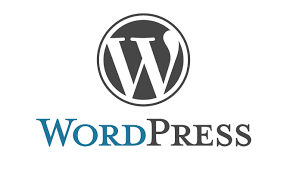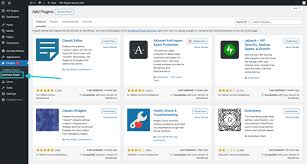Creating a WordPress site is one of the most popular and effective ways to establish an online presence, whether you’re a small business owner, blogger, or developer. Known for its flexibility, WordPress is an open-source content management system (CMS) that powers over 40% of all websites worldwide. In this guide, we’ll explore the best methods and tools to develop a WordPress site, focusing on everything from choosing the right hosting to selecting themes and optimizing performance.
By following these steps, you’ll be well on your way to creating a professional, efficient, and high-performing WordPress site.

1. Choose the Right Hosting for Your WordPress Site
The first step to developing a successful WordPress site is choosing the right hosting provider. Hosting directly impacts your site’s speed, performance, and scalability. Look for hosting providers that offer specific WordPress hosting options, as these often include features like automatic updates, enhanced security, and one-click WordPress installation.
Recommended Hosting Providers for WordPress:
- Hostinger: Known for affordable and fast WordPress hosting, Hostinger’s WordPress plans come with LiteSpeed technology, making them ideal for small to medium-sized sites.
- SiteGround: SiteGround’s WordPress hosting offers excellent support and security, perfect for those looking to build a reliable site with strong support.
- Bluehost: Officially recommended by WordPress, Bluehost provides a range of WordPress-optimized hosting plans that are beginner-friendly and budget-conscious.
2. Use a Quality Theme for a Professional Look and Feel
Choosing the right theme is crucial for both the appearance and functionality of your WordPress site. Premium themes are often more customizable and come with better support than free options, but there are quality free themes available as well.
Top WordPress Theme Marketplaces:

- ThemeForest: With thousands of WordPress themes across every industry, ThemeForest offers a variety of themes with responsive designs, customizable options, and pre-built layouts.
- Elegant Themes (Divi): Divi by Elegant Themes is one of the most popular and versatile themes, featuring a drag-and-drop builder perfect for creating custom layouts without coding.
- Astra Theme: Astra is a lightweight theme optimized for speed and performance, suitable for any WordPress site type, from blogs to e-commerce stores.
When choosing a theme, look for one that is lightweight, SEO-friendly, and compatible with the latest version of WordPress. It’s also important to select a responsive theme that will look great on any device.
3. Install Essential Plugins to Extend Functionality
One of the best features of WordPress is the vast library of plugins available to extend your site’s functionality. Plugins can help you with everything from SEO and security to e-commerce and performance optimization. Here are some essential plugins for any WordPress site:
- Yoast SEO: Yoast SEO helps improve your site’s search engine visibility by optimizing on-page SEO.
- WP Rocket: WP Rocket is one of the best caching plugins to improve loading speed and overall site performance.
- WooCommerce: If you plan to add an online store, WooCommerce is the top e-commerce solution for WordPress, with customizable options for product listings, payments, and inventory management.
- Wordfence Security: Wordfence protects your WordPress site from malware, hacks, and other threats with a robust firewall and malware scanner.
Installing the right plugins helps optimize your site, increase security, and improve user experience. Just remember to avoid overloading your site with too many plugins, as this can slow it down.
4. Customize Your Site’s Design with the WordPress Customizer
The WordPress Customizer is a built-in tool that allows you to edit many aspects of your theme’s design without any coding knowledge. With the Customizer, you can modify colors, fonts, layout, and even add widgets to various sections of your site.
For developers looking to add custom CSS, the Customizer also includes a CSS editor, making it easy to tailor your site’s look further.
How to Use the WordPress Customizer:
- Go to Appearance > Customize in your WordPress dashboard.
- From here, explore the options available under different sections like Colors, Typography, Header, and Footer.
- Make adjustments and see the changes in real-time before publishing.
For more design flexibility, consider using a page builder like Elementor, which provides a drag-and-drop interface and extensive customization options.
5. Optimize Your WordPress Site for Speed and Performance
A fast-loading site improves user experience and can boost your search engine rankings. WordPress sites, especially those with large themes or plugins, can be slow without optimization. Here are some effective ways to optimize your WordPress site for speed:
- Enable Caching: Caching plugins like WP Rocket or W3 Total Cache can significantly improve your site’s load time by storing a static version of your pages.
- Optimize Images: Use image compression tools like Smush or ShortPixel to reduce image file sizes without compromising quality.
- Use a Content Delivery Network (CDN): A CDN like Cloudflare can improve loading times for users across different geographical locations by serving cached content from servers near them.
Tip: To test your site’s speed, use tools like Google PageSpeed Insights or GTmetrix.
6. Secure Your WordPress Site from Threats
Security is critical when developing any WordPress site. WordPress sites are often targeted by hackers due to the popularity of the platform. To secure your site, follow these best practices:
- Use Strong Passwords and Two-Factor Authentication: Use complex passwords for your admin account and enable two-factor authentication for extra security.
- Keep WordPress Updated: Regularly update your WordPress core, theme, and plugins to close security vulnerabilities.
- Install a Security Plugin: Plugins like Wordfence and Sucuri offer malware scanning, firewall protection, and more.
For more tips on keeping your site secure, check out WordPress’s security recommendations.
7. Optimize SEO for Better Visibility
Good SEO practices help your WordPress site rank higher in search results, making it easier for potential visitors to find you. Start by installing an SEO plugin like Yoast SEO or Rank Math, which guides you through optimizing your content, meta tags, and images for search engines.
Other SEO Tips for WordPress Sites:
- Use Clean Permalinks: Go to Settings > Permalinks and choose a clean structure like “Post Name” for SEO-friendly URLs.
- Optimize Your Content: Conduct keyword research to find relevant keywords, and incorporate them naturally within your content.
- Build Quality Backlinks: Backlinks are a major ranking factor, so seek opportunities to link back to your site from authoritative sources.
For more in-depth SEO tips, visit Moz’s Beginner’s Guide to SEO.
Conclusion
Creating a successful WordPress site involves choosing the right hosting, using high-quality themes and plugins, and optimizing for speed, security, and SEO. By following these steps and using the tools mentioned, you’ll be able to develop a WordPress site that’s both functional and optimized for success.
Whether you’re a beginner or an experienced developer, WordPress offers the flexibility to build a site tailored to your unique needs. Get started today, and enjoy the powerful benefits of the world’s most popular CMS!

